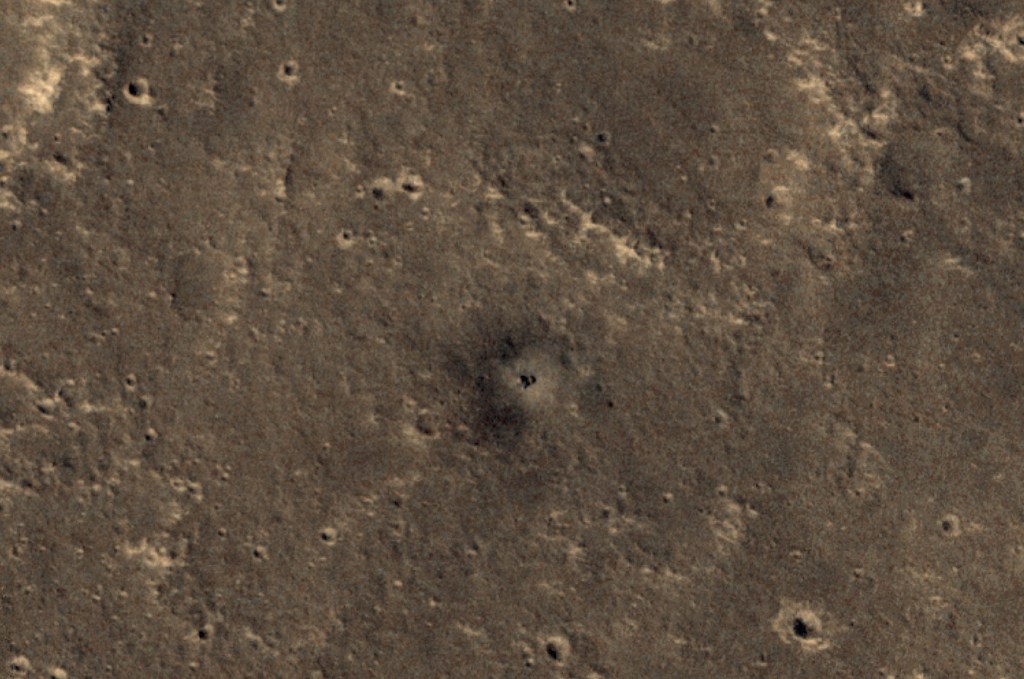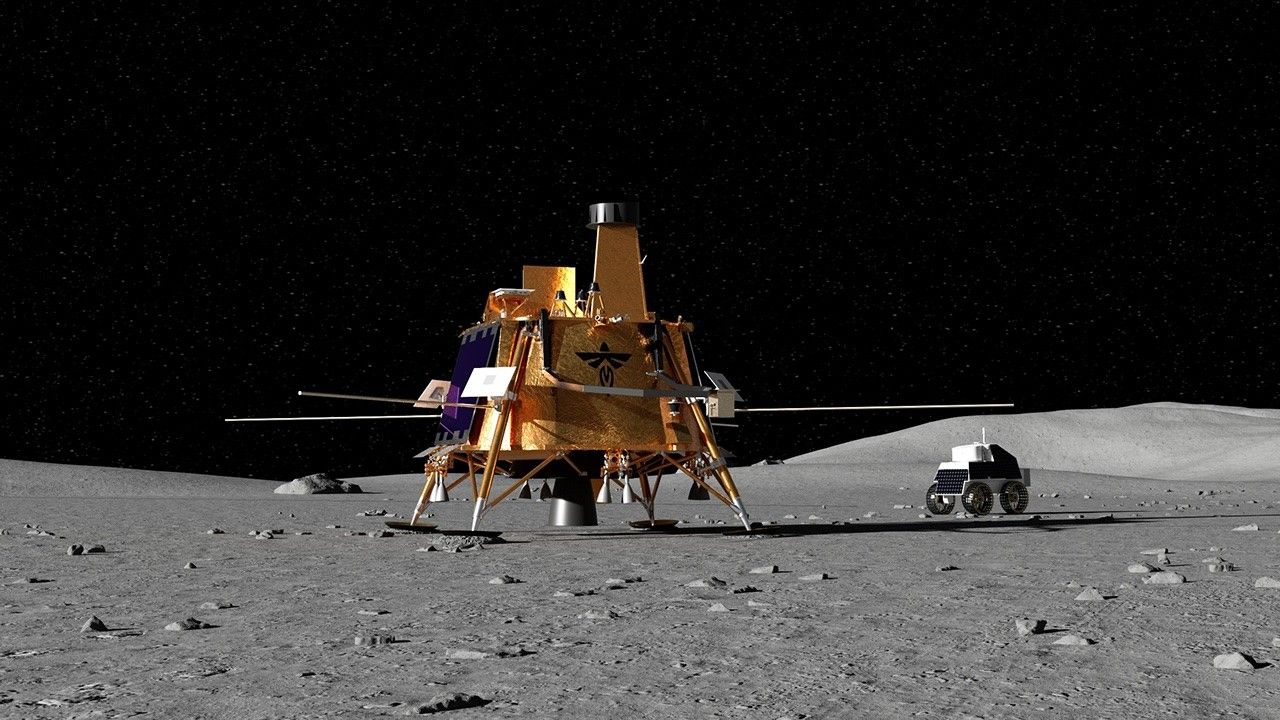Humankind has studied the Sun for millennia. Ancient Babylonians recorded eclipses on stone tablets. Renaissance scientists peered through telescopes, tracking sunspots. Eventually we took to space, and the first satellites captured solar particles streaming past Earth.
Each generation ran against the limits of their tools. So they built new ones, and a new bounty of questions emerged. Today, cutting-edge solar research can still trace its lineage to the efforts of early, Earth-bound Sun-watchers who were just as eager to understand our closest star. This is an abridged story of that scientific history: A genealogy of the advances that led to solar science as we know it today.
1375 BCE – 1543 CE — EARLY HISTORY OF SOLAR SCIENCE

Long before they had telescopes, humans kept an eye on the Sun.
1375 BCE: Babylonians used stone tablets to record solar eclipses.
800 BCE: Astronomers in the ancient China recorded the first observations of sunspots in I Ching, the Book of Changes.
150 CE: Claudius Ptolemy wrote The Almagest, describing a universe with Earth at the center and the Sun, planets and stars circling around it.
1543 CE: Nicolaus Copernicus publishes De Revolutionibus Orbium Coelestium, a new planetary model that placed the Sun, not Earth, at the center.
Caption: Babylonian Solar Eclipse Tablet listing eclipses between 518 and 465 BCE. Credit: By Jona Lendering, CC0 1.0 Universal
1608 — INVENTION OF THE TELESCOPE

German-Dutch lensmaker Hans Lippershey applies for a patent for his Dutch Perspective Glass. The device combined concave and convex lenses to magnify objects by three times.
Italian astronomer Galileo Galilei learns of the invention in 1609, refining the design to achieve 20-fold magnification. Galileo becomes the first to turn this device skyward to make astronomical observations. Around 1610, he would also begin to keep track of mysterious dark spots on the Sun.
Caption: Early depiction of the Dutch Perspective Glass circa 1624. Credit: Adriaen van de Venne/Public domain
APRIL 19, 1610 — THE SUN’S “HEAVENLY BREEZE”

In a letter to Galileo, Johannes Kepler hypothesized that the tails of comets are blown away by a “heavenly breeze” from the Sun.
Kepler’s suggestion anticipates the discovery of the solar wind more than 400 years later.
Caption: Comet ISON streaks across the sky 80 million miles from Earth. Credit: NASA’s Marshall Space Flight Center/Aaron Kingery
1611-1613 — A SPOTTY, SPINNING SUN

In 1611, Johann Goldsmid of Holland observes what might be spots on the Sun. The spots drifted across the Sun’s disk, suggesting that the Sun rotates.
Galileo demonstrates that these dark spots were physical features on the Sun, not undiscovered planets in space, in his in his Letters on Sunspots, published in 1613.
The detection of imperfections and changes on the Sun challenged the view (prevailing since Aristotle’s time) that the Sun was a perfect and unchanging orb.
Caption: Sunspots observed by the Helioseismic and Magnetic Imager aboard NASA’s Solar Dynamics Observatory. Credit: NASA’s Solar Dynamics Observatory/Goddard Space Flight Center Scientific Visualization Studio
1645-1715 — SUNSPOTS SUBSIDE

For seventy years, astronomers record an unusally low number of sunspots. This period was later named the “Maunder Minimum” after Annie (1868–1947) and Edward Maunder (1851–1928), a husband and wife team who studied how sunspot positions changed over time.
Caption: Sunspots observed by the Helioseismic and Magnetic Imager aboard NASA’s Solar Dynamics Observatory. Credit: NASA’s Solar Dynamics Observatory/Goddard Space Flight Center Scientific Visualization Studio
1802-1895 — A NEW SCIENCE OF SPECTROSCOPY

1802: English scientist William Hyde Wollaston notices that sunlight passing through a prism contains mysterious dark lines.
1817: Bavarian physicist Joseph von Fraunhofer independently rediscovers these dark “spectral lines.” He begins labeling and systematically investigating them.
1859: German physicist Gustav Kirchhoff discovers that each atomic element leaves its own unique set of spectral lines. Spectroscopy becomes a tool for determining the composition of distant light sources.
Caption: During the Maunder Minimum, sunspots were rarely observed. Credit: NASA’s Marshall Space Flight Center
JULY 8, 1842 — THE SUN HAS AN ATMOSPHERE

Observing an eclipse from Italy, English astronomer Francis Baily suggests that the mysterious haze encircling the Sun — known as the corona, Latin for crown — is the Sun’s atmosphere.
Caption: Spectral lines appear at characteristic locations along the electromagnetic spectrum, indicating the presence of specific atomic elements. Credit: NASA/JPL
1843 — DISCOVERY OF THE SUNSPOT CYCLE

German astronomer Samuel Heinrich Schwabe studies the Sun for 17 years, looking for tiny shadows cast by undiscovered planets inside the orbit of Mercury. He also carefully monitors sunspots, since they could easily be mistaken for such shadows.
Schwabe never finds the shadows he was looking for. Instead, in 1843 he discovers the sunspot cycle: The average number of sunspots increases and then decreases with a period that Schwabe originally estimated to be 10 years (later estimates would put it at 11 years).
Caption: Traveling sunspots are seen by NASA’s Solar Dynamics Observatory (SDO) satellite from Oct. 25 to 27, 2010. Credit: NASA’s Goddard Space Flight Center/Scientific Visualization Studio
SEPTEMBER 1, 1859 — THE CARRINGTON EVENT

As English astronomer Richard Carrington watches the Sun through his telescope, he notices a sudden brightening on the Sun’s surface like he’d never seen before.
Seventeen hours later, the northern lights are visible as far south as Cuba. Telegraph systems across the western world fail and catch fire, in some cases giving their operators electric shocks.
The Carrington Event, as it would later become known, was a white light flare, a rare phenomenon not observed again for over 50 years. It was also the first documented case of a geomagnetic storm associated with a coronal mass ejection, or CME, in which charged particles from the Sun are ejected in an explosive burst.
Caption: A modern simulation of Earth’s magnetic field during the Carrington event. Credit: NASA’s Goddard Space Flight Center/Scientific Visualization Studio/Tom Bridgman
1868-1895 — DISCOVERY OF HELIUM
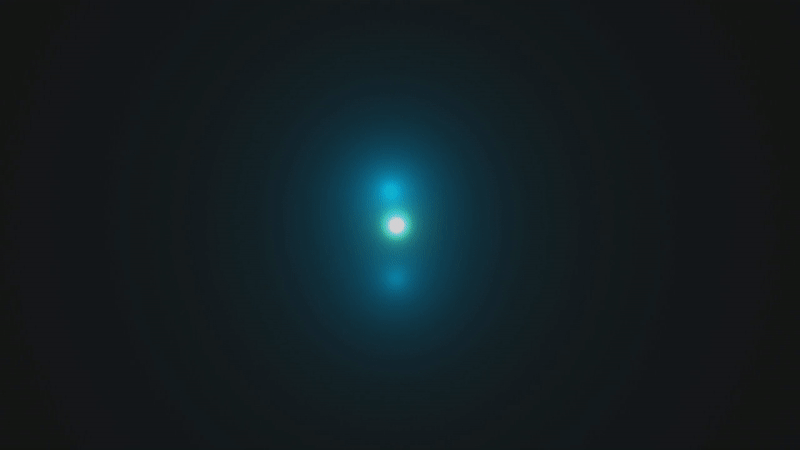
1868: French astronomer Pierre Jules César Janssen detects unknown spectral line during an eclipse. Later scientists repeating this observation dub it a new chemical element named helium (from the Greek “helios,” meaning Sun).
1895: Scottish chemist William Ramsey discovers helium on Earth. We now know it is one of the most abundant elements in the universe, second only to hydrogen.
Caption: An animation of a standard helium atom, showing its protons (green), its neutrons (white), and its electrons (blue). Credit: NASA/Dana Berry
1869 — HINTS OF A CORONAL MYSTERY

Watching the 1869 total solar eclipse, American astronomers Charles Augustus Young and William Harkness observe an unusual green emission line of wavelength 530.3 nanometers, not associated with any elements known on Earth.
On the heels of the discovery of helium, scientists posit that the line came from a new element: coronium.
It would be more than seventy years before the anomalous spectral line was correctly identified, revealing that it was from a known element at much hotter temperatures than ever before observed. The discovery would open up new questions about the corona’s extreme temperature.
Caption: The green spectral line seen during a total solar eclipse was once thought to be the element coronium. Credit: NASA’s Goddard Space Flight Center/Scientific Visualization Studio/Joy Ng
1908 — THE SUN IS MAGNETIC

American astronomer George Ellery Hale notices that spectral lines split in regions near a sunspot. The phenomenon, known as the Zeeman effect, was known to occur in the presence of intense magnetic fields. His results suggest that sunspots have magnetic fields over a thousand times stronger than Earth’s.
Over the following decade, Hale and colleagues discover that the changing number of sunspots reflects a larger magnetic process on the Sun known as the solar cycle. Every 22 years — twice the length of the sunspot cycle — the magnetic polarity of the Sun reverses. North becomes south, and vice versa.
Caption: An animation of the Sun’s magnetic poles flipping during its 22-year magnetic cycle. Credit: NASA’s Goddard Space Flight Center
MAY 29, 1919 — ECLIPSE CONFIRMS RELATIVITY

English astronomer Sir Arthur Eddington observes starlight bending around the Sun’s limb during a solar eclipse. The observations confirm a key prediction of the theory of General Relativity. The theory’s creator, a physicist named Albert Einstein, becomes world famous overnight.
Caption: Inverted image of the eclipse on May 29, 1919. Credit: F. W. Dyson, A. S. Eddington, and C. Davidson/Public domain
1931 — ARTIFICIAL ECLIPSES ACCELERATE SUN SCIENCE
 French astronomer Bernard Lyot invents the coronagraph, a telescope that selectively mimics a solar eclipse by blocking out light from the Sun’s bright surface. For the first time, scientists could see — and therefore study — the corona without having to wait for a natural eclipse.
French astronomer Bernard Lyot invents the coronagraph, a telescope that selectively mimics a solar eclipse by blocking out light from the Sun’s bright surface. For the first time, scientists could see — and therefore study — the corona without having to wait for a natural eclipse.
Caption: Bernard Lyot sitting at his Coronagraph at the Pic du Midi observatory in France ca 1939. Credit: Courtesy of the American Museum of Natural History
JULY 1942 — THE CORONAL HEATING PROBLEM IS BORN
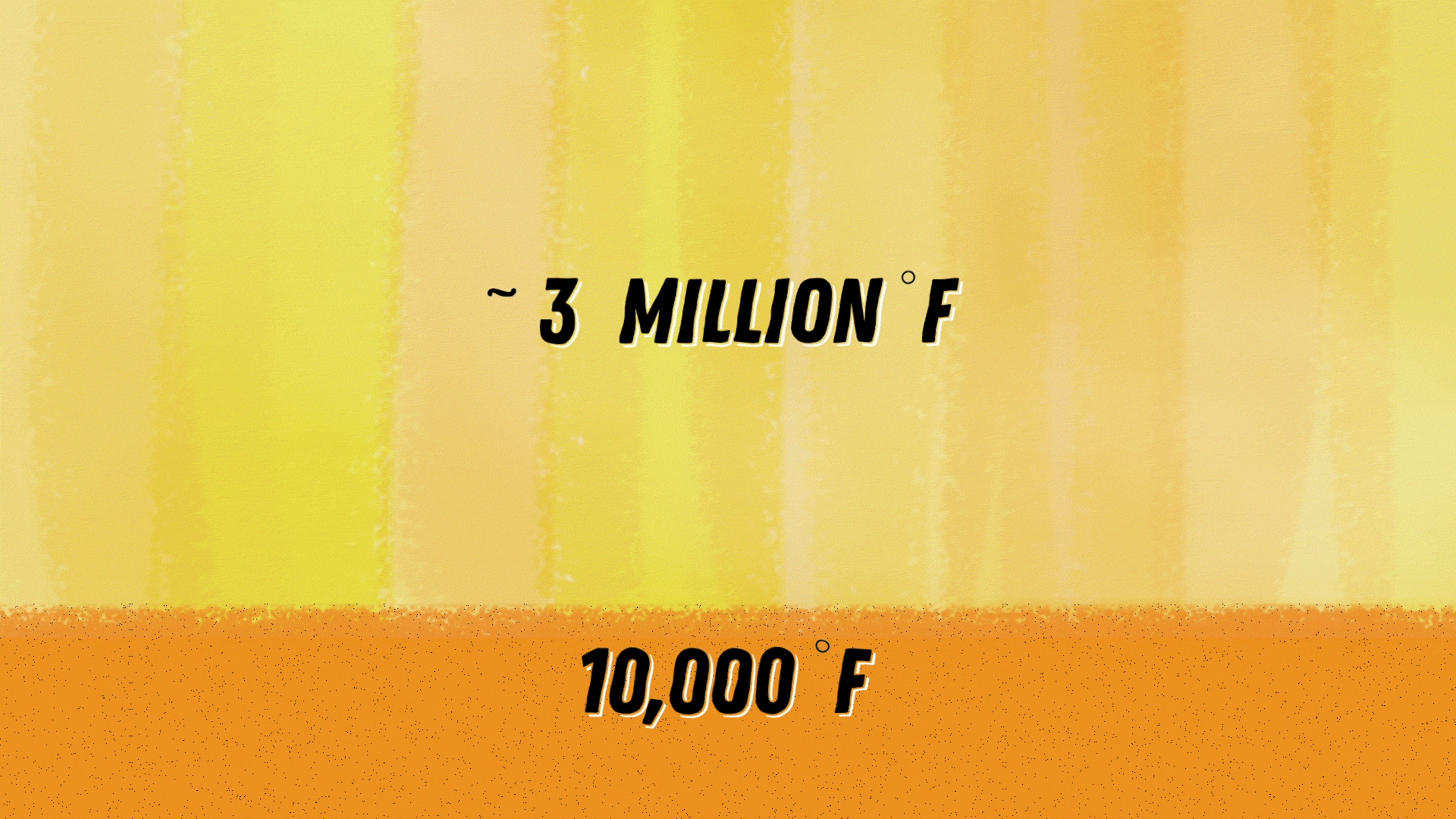
Swedish astronomer Bengt Edlen shows that the anomalous spectral lines in the corona previously credited to an unknown element found only on the Sun — coronium — in fact come from iron that had lost 13 electrons. Such a loss requires extremely high temperatures: approximately 3 million degrees Fahrenheit, much hotter than the 10,000 degree solar surface.
Edlen’s finding gave rise to what we now call the coronal heating problem: How does the solar atmosphere become so much hotter than its surface?
Caption: The Sun’s surface is 10,000 degrees Fahrenheit while the corona — the Sun’s outer atmosphere — is several hundred times hotter. Credit: NASA’s Goddard Space Flight Center/Scientific Visualiation Studio/Joy Ng
1946 — SOLAR ENERGETIC PARTICLES DETECTED AT EARTH

Scott Forbush, a physicist working out of the Carnegie Institution in Washington, D.C., is monitoring the rate of incoming energetic particles when he detects a spike not long after a solar flare occurs on the Sun. The first time energetic particles (protons, formed from ionizing hydrogen) from the Sun were detected at Earth, Forbush’s findings solidify the concept of space weather — conditions in near-Earth space were affected by varying activity on the Sun.
Caption: On Oct. 24, 2014, NASA’s Solar Dynamics Observatory observed an X-class solar flare — the most intense rating for solar flares — erupt from a Jupiter-sized sunspot group. Credit: NASA’s Goddard Space Flight Center/SDO/Joy Ng
1955 — A BUBBLE AROUND THE SUN
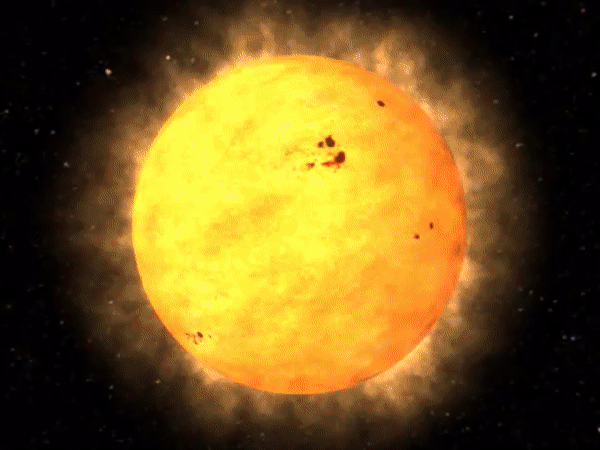
Leverett Davis Jr., a theoretical physicist at the California Institute of Technology, comes up with the concept of the heliosphere: a giant magnetic bubble around the Sun. As solar activity increases, the bubble grows larger, fighting back the cosmic rays — energetic particles from deep space — that could make it through to Earth.
This bubble was hypothesized — correctly, as it turns out — to be formed by a constant stream of solar particles flowing from the Sun. But the mechanisms for this outflow were not understood.
Caption: An animation of the heliosphere. Credit: NASA’s Goddard Space Flight Center/Conceptual Image Lab/Walt Feimer
OCTOBER 1, 1958 — NASA OPENS, PLANS SOLAR PROBE
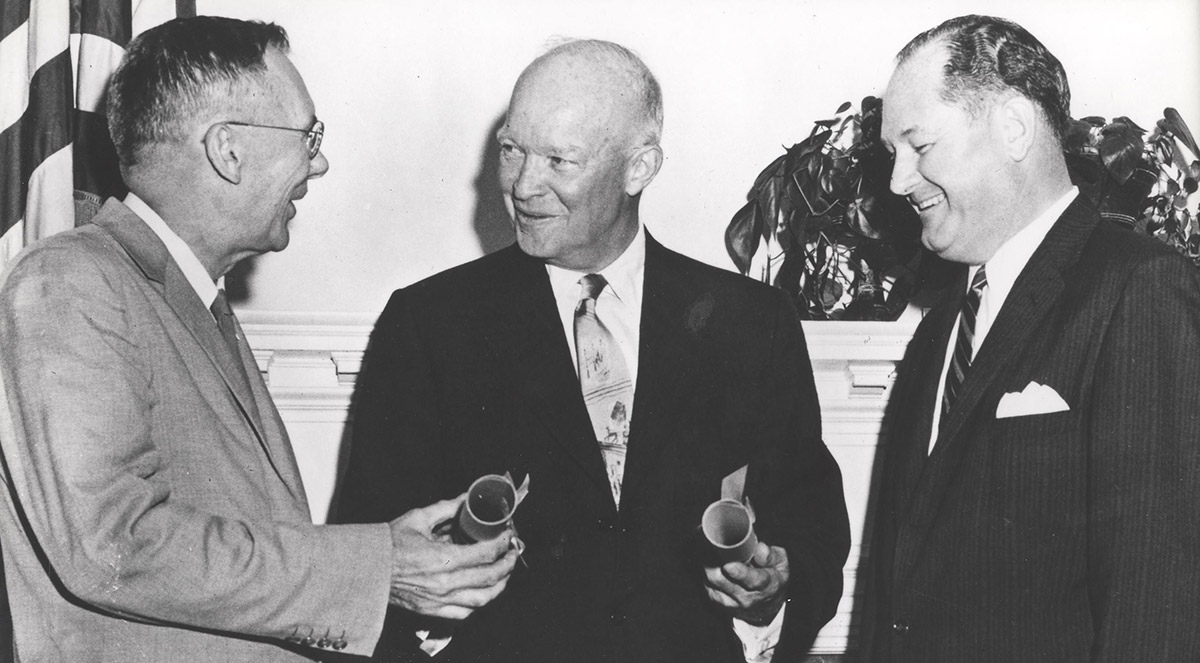
The National Aeronautics and Space Administration, or NASA, opens for business.
The National Research Council’s Space Studies Board receives an interim report with recommendations for future missions. Among them was that of a solar probe to travel inside the orbit of Mercury and measure the particles and fields environment near the Sun.
Caption: President Dwight Eisenhower (center) presents commissions to T. Keith Glennan (left) and Hugh L. Dryden (right), NASA’s first administrator and deputy administrator respectively. In July 1958, Eisenhower had signed the National Aeronautics and Space Act, creating the agency, which opened for business on Oct. 1, 1958. Credit: NASA
NOVEMBER 1958 — EUGENE PARKER PREDICTS THE SOLAR WIND
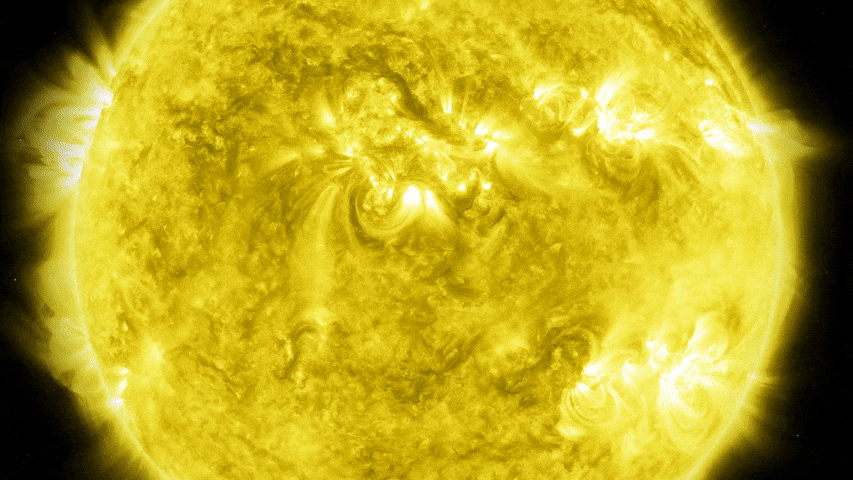
Eugene Parker, a young astrophysicist at the University of Chicago, was puzzled by the coronal heating problem. Why didn’t the multi-million degree solar atmosphere fly right off the Sun? The answer, he found, is that it wouldn’t.
According to Parker’s paper, published in November 1958, the hot solar atmosphere expands continuously outward from the Sun in all directions, forming a solar wind. This solar wind blows up the heliospheric “bubble” hypothesized by Leverett Davis, Jr. in 1955. But it would also drag the Sun’s magnetic field along with it. Given the Sun’s continuous rotation as the solar wind travels straight outwards, the magnetic field lines would bend into a twisting, ballerina-skirt-like shape that came to be known as the Parker spiral.
However, Parker’s ideas were purely theoretical. No one had ever directly measured the solar wind — yet.
Caption: Starting with a coronal mass ejection captured by NASA’s Solar Dynamics Observatory (171 angstrom telescope), this animation zooms out to show an animated solar wind. Credit: NASA’s Goddard Space Flight Center/Scientific Visualization Studio
1959 — SOLAR WIND IS MEASURED

The Soviet satellite Luna 1 becomes the first spacecraft to leave geocentric orbit, venturing outside of Earth’s magnetic field into interplanetary space. There it observes a slew of hot particles streaming by at incredible speeds. Three years later, NASA’s Mariner 2 mission confirmed these observations while on its way to Venus. There was no longer any doubt: The solar wind exists.
Caption: Luna 1 was the first human-made object to escape the grip of Earth’s gravity. Credit: NASA/JPL
1967 — A SPINNING SOLAR ATMOSPHERE?

Scientists knew that stars spin. But what about their atmospheres?
Edmund J. Weber and Leverett Davis, Jr. of Caltech publish a paper suggesting that stellar atmospheres spin along with their surfaces. As the tips of their atmospheres blew off into the stellar wind, the star would lose angular momentum, rapidly slowing down its spin. It could explain why stars all over the universe were slowing down faster than expected.
A promising idea — but the spin of our own Sun’s atmosphere had never been documented. So began a decades-long hunt to see the Sun’s corona spin.
Caption: Images of the Sun taken by NASA’s Solar Dynamics Observatory in a wavelength of ultraviolet light (171 angstrom). Credit: NASA/SDO
DECEMBER 14, 1971 — FIRST CORONAL MASS EJECTION SEEN FROM SPACE

The Orbiting Solar Observatory-7 spacecraft carries a coronagraph into space. Looking over the data, Richard Tousey of the Naval Research Laboratory in Washington, D.C. observes an unusual bright spot in part of the image, and worries the camera has failed.
As the bright spot moves away from the Sun in subsequent images, he realizes he’s observed a coronal mass ejection, or CME. These magnetic solar eruptions had been predicted in the 60’s, but had never before been observed in space.
Unlike the continuous solar wind, CMEs are bursts of high speed particles that are potentially dangerous.
Caption: The first images of a coronal mass ejection from space, seen here as lighter material leaving from the bottom left side of each image, were captured by the OSO-7 spacecraft. Credit: NASA
APRIL 17, 1976 — HELIOS MISSION BECOMES CLOSEST SPACECRAFT TO THE SUN

The twin Helios 1 and 2 spacecrafts launch on Dec. 10, 1974, and Jan. 15, 1976, respectively. Both orbit the Sun, studying it intensively until 1985. On April 17, 1976, Helios 2 becomes the first spacecraft to enter inside the orbit of Mercury, traveling as close at 26.55 million miles to the Sun, bringing it less than one third the distance from the Sun to Earth.
The Helios mission greatly improved our understanding of how the solar wind behaved before it reached Earth, revealing that the solar wind is much more variable the closer it is to the Sun.
Caption: The Helios spacecraft before launch. Credit: NASA/JPL
NOVEMBER 1, 1994 — WIND MEASURES THE WIND

NASA’s Wind spacecraft launches. Wind first travels to the L1 lagrange point, outside Earth’s protective magnetic field between the Sun and Earth, then moves to L2, on the other side of Earth. In both locations, the spacecraft makes the highest time resolution measurements of the solar wind to date, uncovering a range of new wave-particle interactions in the solar wind in the process.
Caption: Illustration of the Wind spacecraft outside Earth’s magnetosphere. Credit: NASA
1995-2010 — MORE, AND BETTER, VIEWS OF THE SUN

Dec 2., 1995: ESA/NASA Solar and Heliospheric Observatory, or SOHO launches. Using SOHO data, Neil R. Sheeley Jr. of the Naval Research Laboratory identifies giant blobs of slow solar wind escaping from the top of helmet streamers — large, bright, loop-like structures that stream into space from the Sun’s edge.
Oct. 25, 2006: NASA’s two Solar and Terrestrial Relations Observatory or STEREO satellites launch to orbit the Sun, one ahead of Earth and the other behind. Combining their vantage points, they reveal the first 360-degree view of the Sun.
Feb. 11, 2010: NASA’s Solar Dynamics Observatory, or SDO, launches into geostationary orbit. SDO continuously observes the Sun in 10 different wavelengths of extreme ultraviolet light, capturing a new image every 10 seconds.
Caption: Views of Active Region 1087 from the SDO/AIA (Atmospheric Imaging Assembly) imager and STEREO/EUVI (Extreme UltraViolet Imager) imager. Credit: NASA’s Goddard Space Flight Center/Scientific Visualization Studio/Tom Bridgman
AUGUST 12, 2018 — PARKER SOLAR PROBE LAUNCHES
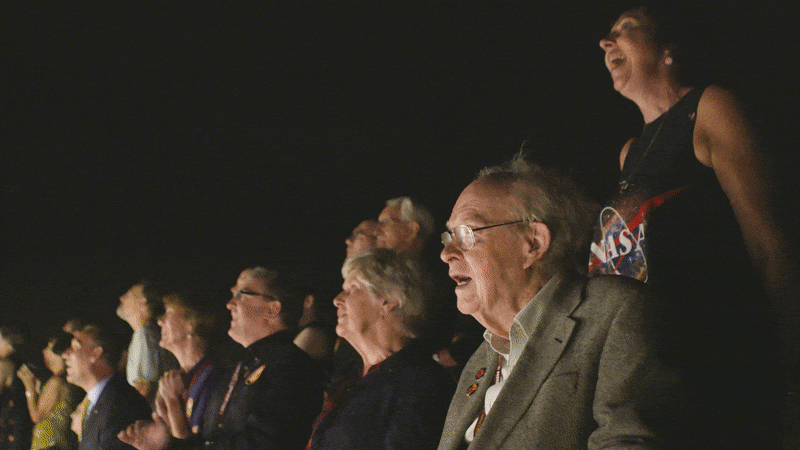
NASA’s Parker Solar Probe — the first NASA mission to be named for a living person — launches from the Cape Canaveral in Florida.
Caption: Dr. Eugene Parker watches the launch of the spacecraft that bears his name — NASA’s Parker Solar Probe — early in the morning of Aug. 12, 2018. Credit: NASA’s Goddard Space Flight Center
1:04 AM OCTOBER 29, 2018 — PARKER SOLAR PROBE BECOMES CLOSEST SPACECRAFT TO THE SUN

Surpassing the record set by the German-American Helios 2 spacecraft in 1976, Parker Solar Probe travels within 26.55 million miles of the Sun to become the closest spacecraft to the Sun. About ten hours later it also becomes the fastest spacecraft, surpassing the 153,454 miles per hour record also set by Helios 2.
Over the course of its nominal 7 year mission, Parker Solar Probe will travel as close as 3.8 million miles from the solar surface and reach speeds of up to 430,000 miles per hour.
Caption: An animation of Parker Solar Probe passing near the Sun. Credit: NASA’s Goddard Space Flight Center/Scientific Visualization Studio
2019 — FIRST PUBLISHED RESULTS FROM PARKER SOLAR PROBE

Early results from Parker reveal the surprises that come from studying the Sun up close. Findings from 2019 include:
• Unanticipated “switchbacks” in the solar wind, where the Sun’s magnetic field abruptly doubles-back on itself,
• Evidence for a “dust-free zone” — first hypothesized in 1929, but never successfully detected — beginning an estimated 3.5 million miles from the Sun,
• The first measurement of rotation in the solar wind — remnants of the corona’s spin much farther from the Sun, before it begins to flow radially, or straight out from the Sun, as it does near Earth.
• Detections of never-before-seen particle events so small that all trace of them is wiped out before they reach Earth.
Caption: Animation of Sun’s magnetic field lines, including “switchbacks” detected by Parker Solar Probe. Credit: NASA’s Goddard Space Flight Center/Conceptual Image Lab
FEBRUARY 2020 — SOLAR ORBITER TO LAUNCH FROM CAPE CANAVERAL

The ESA/NASA Solar Orbiter mission launches on a path out of the ecliptic plane — the belt of space, encircling the Sun’s equator, in which all planets orbit and nearly all space missions orbit.
From this vantage point 24 degrees above the ecliptic, Solar Orbiter acquires a top-down view of the Sun and captures the first-ever images of the Sun’s north and south poles. Its suite of 10 instruments document the never-before-observed magnetic environment there — key to understanding the Sun’s 11-year solar cycle and its periodic outpouring of solar storms.
Caption: An animation of Solar Orbiter peering at the Sun through peepholes in its heat shield. Credit: ESA/ATG medialab
By Miles Hatfield
NASA’s Goddard Space Flight Center, Greenbelt, Md.





